Sodalite
Sodalite is a dark blue mineral which often has bands or patches of white Quartz running through it. A fair few people do confuse it with Lapis Lazuli; while they can be a similar shade of blue, the chemistry is entirely different.
Sodalite is often sold polished – whether cut into cabochons for jewellery making, tumblestones, eggs, or carved into more decorative shapes.
Showing all 10 results
-
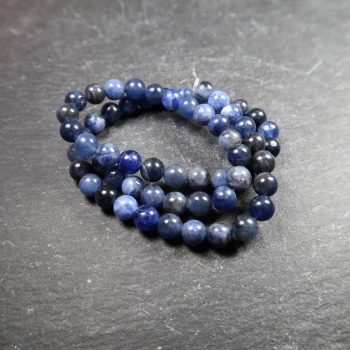
Sodalite bead strands
£3.00 – £4.50 -
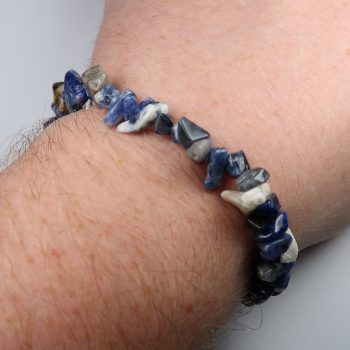
Sodalite Bracelets
£3.95 -
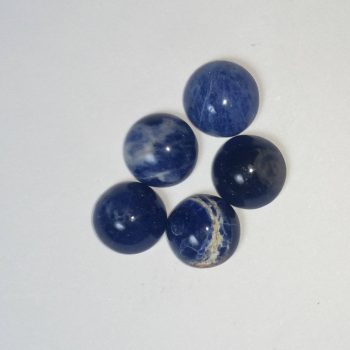
Sodalite Cabochons
£1.35 – £8.00 -
Updated
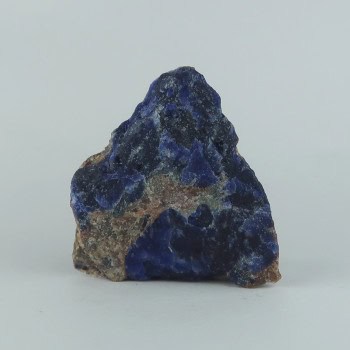
Sodalite from Sodalite mine, Namibia
£5.00 -
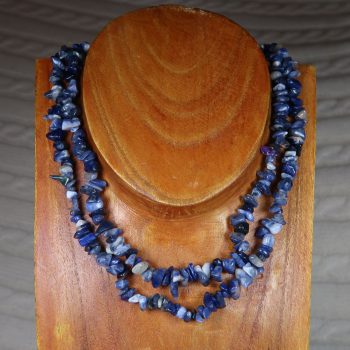
Sodalite necklaces
£3.00 – £4.00 -
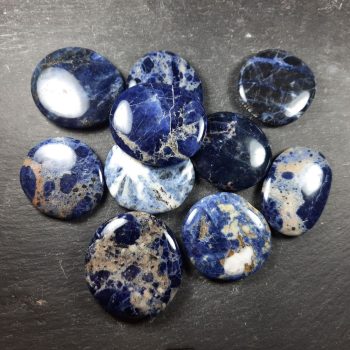
Sodalite Palmstones
£3.50 -
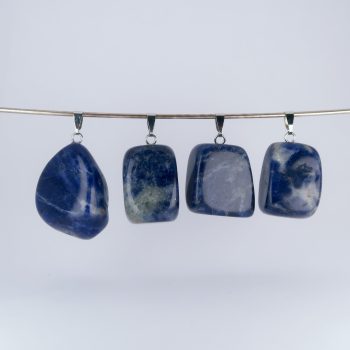
Sodalite Pendants
£1.50 – £3.00 -
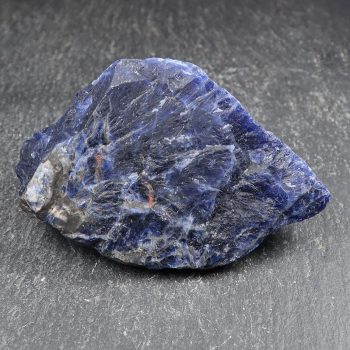
Sodalite Specimens / Rough
£4.50 -
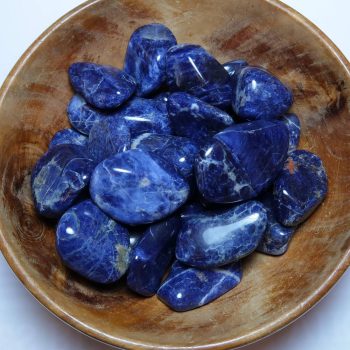
Sodalite Tumblestones
£0.55 – £2.95 -
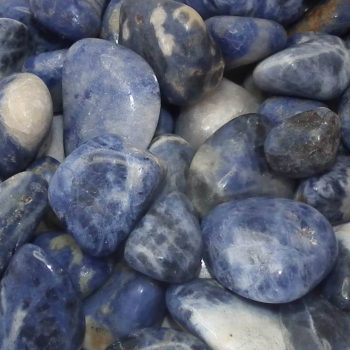
Sodalite tumblestones (Fluorescent)
£2.00 – £3.50
Appearance, Uses and History
Sodalite is often used for lower end jewellery, mostly as beads, cabochons, or carved pendants.
Blue stones can be quite difficult to find in jewellery, so you would think Sodalite might be more popular. It looks quite similar to Lapis Lazuli, so could arguably be used as a cheap replacement stone.
However, Sodalite is widely variable in colour, tone, and pattern – this means it is more likely to be used for one of a kind jewellery designs than in mass produced jewellery where a uniform look is desired.
Sodalite is often carved, typically into spheres, eggs, or other decorative objects. Tumblestones are very common, too – and make a nice contrast against white or pale stones.
The massive form of Sodalite is relatively common, so may hold little of interest to serious mineral collectors – however, the crystalline specimens are very interesting and ideal for collectors. Some collectors may also be interested in quality fluorescent specimens!
Locales
Sodalite is found around the world, including Afghanistan, Brazil, Canada, Denmark, Greenland, Namibia, Norway, Russia, and the USA. Some rare specimens are crystalline and of a very high quality – typically from Afghanistan, Canada, or the USA.
Mineralogy
Rich blue, often with white veining and spots. May have hints of green, yellow, violet.
A type of white Sodalite occurs in Syenite along the shores of Lake Superior, Michigan – where it is referred to as ‘Yooperlite’. It is highly fluorescent.
Carefully examine the specimen for brassy Pyrite flecks or chunks – Sodalite does not contain Pyrite but Lapis does.
Hazards and Warnings
Almost all rocks, minerals (and, frankly, almost all other substances on earth) can produce toxic dust when cutting, which can cause serious respiratory conditions including silicosis.
When cutting or polishing rocks, minerals, shells, etc, all work should be done wet to minimise the dust, and a suitable respirator or extraction system should be used.
Translations
Arabic:
- سوداليت
Hindi:
Portuguese:
- Sodalita
Bengali:
Indonesian:
Punjabi:
- ਸੋਡਾਲਾਈਟ
English:
- sodalite
Italian:
Russian:
- Содалит
French:
Japanese:
- 方ソーダ石
- ソーダライト
- 方曹達石
Spanish:
- Sodalita
German:
- Sodalith
- Sodalit
Korean:
- 소다 라이트
Thai:
Gujurati:
- સોડાલાઇટ
Mandarin and Traditional Chinese:
- 方钠石
- 蓝纹石
Urdu:
